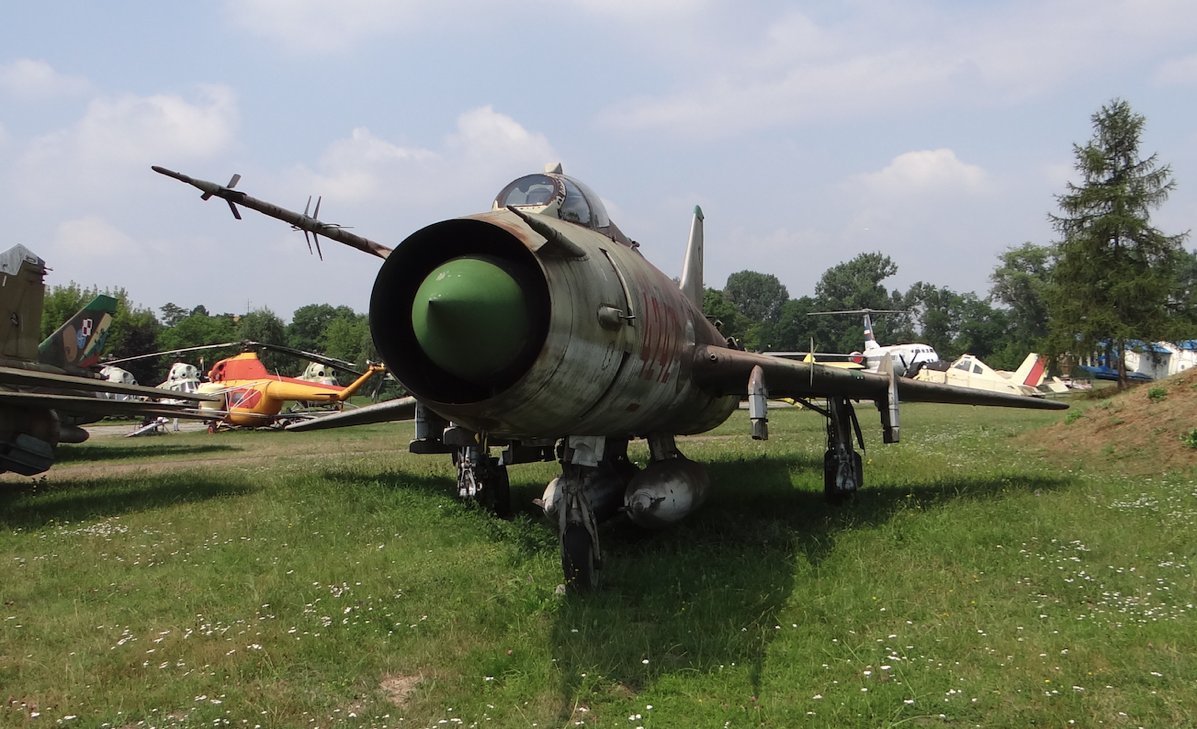Kraków 2007-08-22
235 Section 1974-04-26
OKB Sukhoi Su-20. Poland. Design
The supersonic fighter-bomber with variable wing geometry. The first aircraft of this type in the Polish Army.
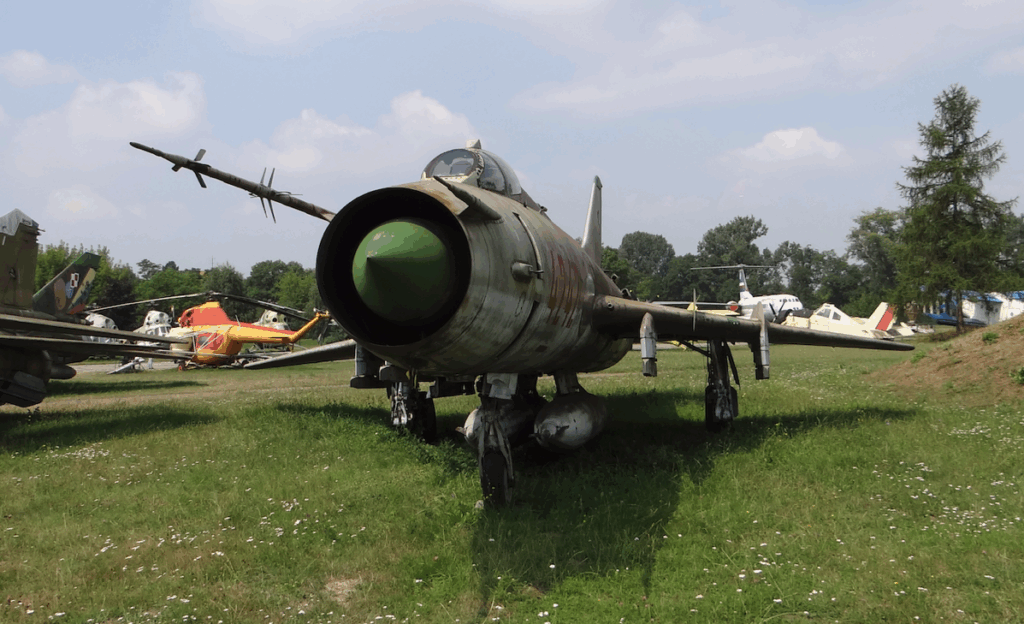
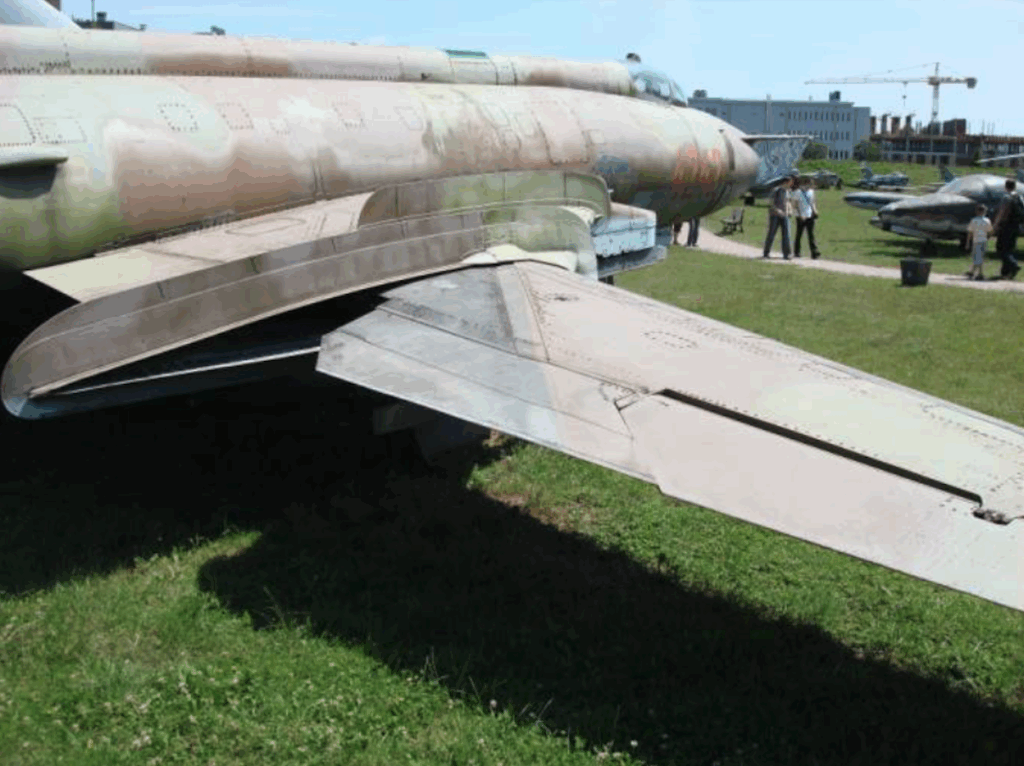
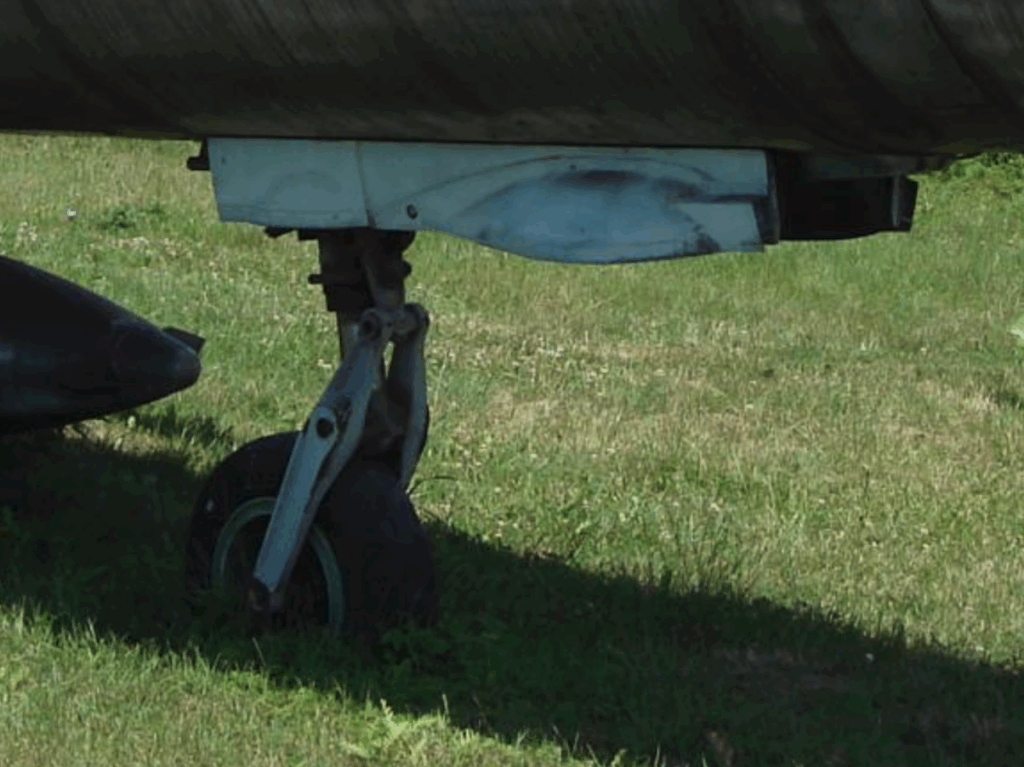
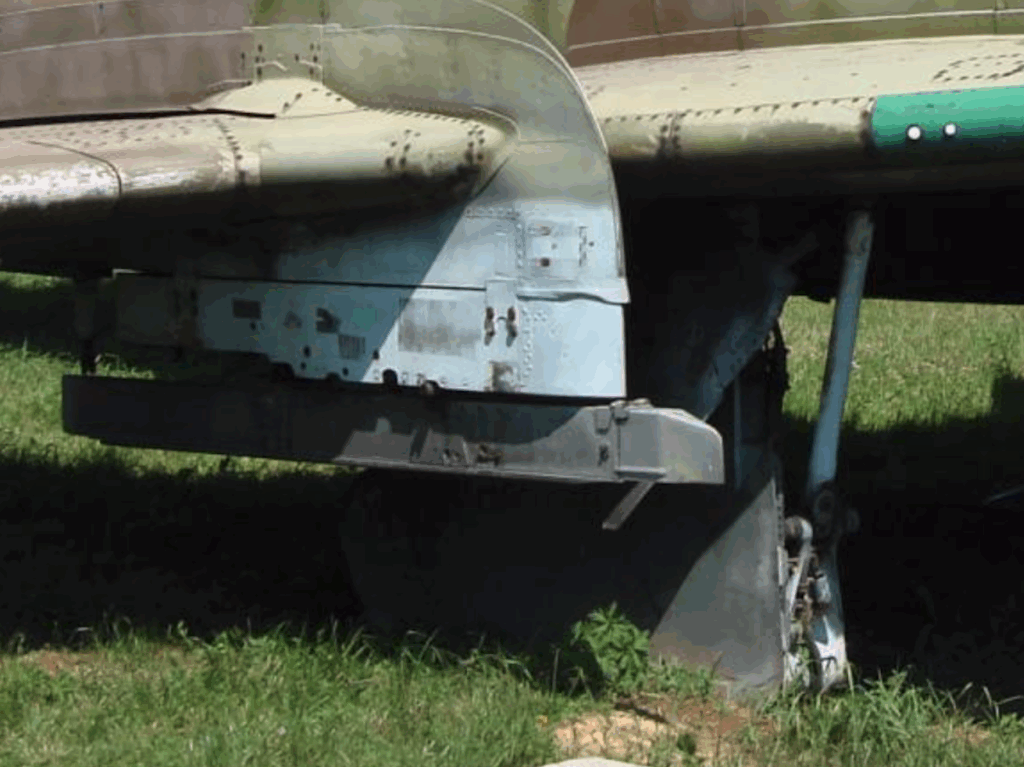
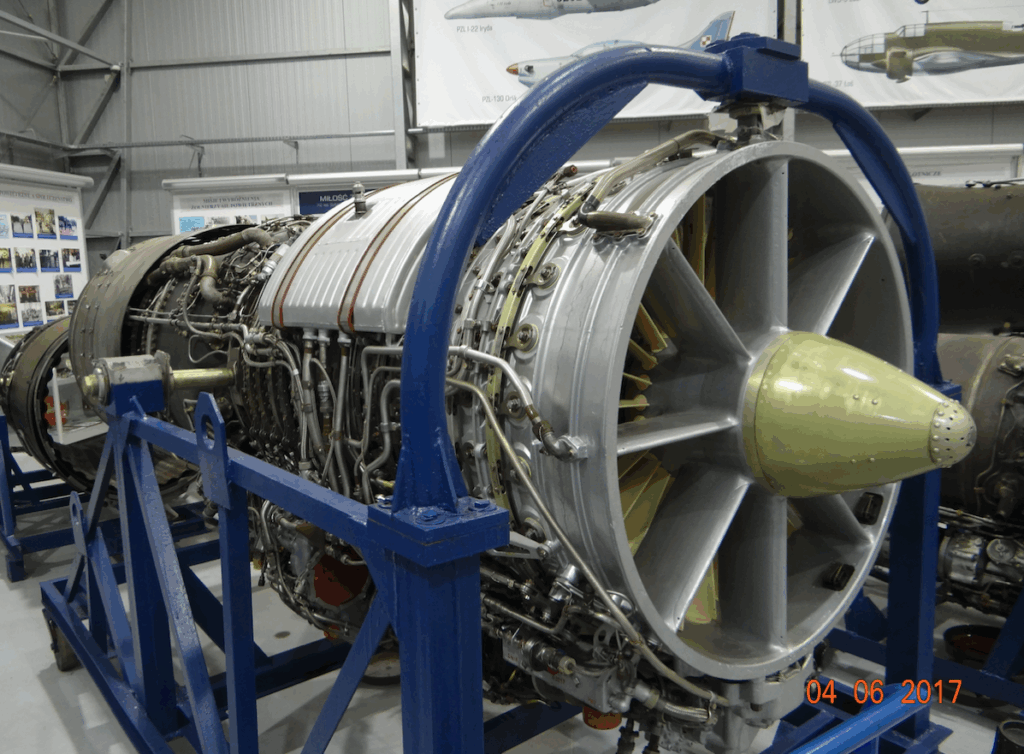
Construction of the Su-20.
Single-seat, single-engine fighter-bomber, supersonic, not equipped with a radar station. Built in a classic configuration with a wing with variable geometry. Medium-wing. The fuselage is made of aluminum and titanium alloys.
The wings consist of a fixed part and external moving parts that assume two positions. The minimum sweep angle is 30 degrees. The maximum is 63 degrees 03 minutes and 56 seconds. This is also the sweep angle of the fixed part of the wings. Both parts are connected to each other by hinges. At the front, by means of a large bearing pin, which is the axis of rotation. At the rear, the support is a four-roller trolley moving on guides attached inside the fixed part. The movement is realized by a hydraulic system. The stationary parts were equipped only with two-section slotted flaps on the trailing edge. The outer parts received ailerons and slotted flaps on the trailing edge. Three-section gills (slots) were placed on the leading edge. The wing received 2 pairs of high aerodynamic guides and 3 pairs of smaller aerodynamic guides reinforcing the structure of the stationary parts of the wings. The wing covering was made by chemical etching. The control surfaces were made of 3-layer glued plates with honeycomb filler.
The fuselage of the aircraft is of semi-monocoque construction and has a cross-section close to circular. The maximum diameter is 1.55 m, length 15.347 m. Technologically, it is divided into two parts. The division occurs at frame number 34. The removable rear part of the fuselage allows access to the engine. Frontal air intake with a central inlet cone that can take two positions. The pilot’s cabin is airtight and air-conditioned. It is placed between frames number 4 and 9. KS-4 S-32 ejection seat, class 0-140. It allows safe exit from the aircraft at speeds from 140 km/h to 1,200 km/h. The canopy opens upwards to the rear. A periscope for observation of the rear half-zone is placed on the fairing. The front windshield is armored. Four aerodynamic brakes are placed in the rear part of the fuselage.
The horizontal plate landing gear has an angle of 55 degrees at 25% of the chord. Mounted with a negative lift of 3 degrees. Anti-flutter masses are mounted at the ends. The deflection ranges from +25 degrees 30 minutes to -10 degrees. The vertical empennage is divided into a rudder and a stabilizer. The rake is 55 degrees.
The three-support landing gear has oil-pneumatic shock absorbers and hydraulic brakes. The front steerable wheel, measuring 660 x 200 mm, is pulled forward into the chamber under the cabin floor. The main landing gear also has single wheels, measuring 880 x 230 mm. The landing gear base is 5.24 m, the main landing gear track is 3.85 m.
Engine
A. Lulka AL-21 F-3 engine with a thrust of 1 x 76.50 kN, and with afterburning 1 x 110.00 kN. This engine is specially adapted for flights at low altitudes. It is a single-flow turbine consisting of; a 14-stage axial compressor, an annular combustion chamber, a 2-stage turbine and an afterburner. The engine is cooled by air taken in by 4 grips placed on the fuselage in the rear part.
Su-20 aircraft were also equipped with the R-29 BS engine. This engine was not used in Polish Su-20 aircraft.
R-29 BS is the S. Tumanski R-29 B-300 isolution 55 engine with a thrust of 1 x 78.45 kN, and with afterburning 1 x 112.80 kN. It is also a two-flow engine, adapted for flights at low altitudes. Engine length 4,991 mm, diameter at the height of the compressor 846 mm, and at the height of the combustion chamber 922 mm. The maximum temperature of gases behind the turbine is 1,000 degrees Celsius. Engine weight 1,222 kg. It consists of; 5-stage low pressure, (1st and 2nd stage made of titanium, the rest of heat-resistant steel), 6-stage high pressure, with a compression ratio of 13:1, annular combustion chamber with 18 injectors, 1-high pressure turbine, 1-low pressure turbine, afterburner about 1.5 m long with three rows of injectors. The engine ends with an adjustable nozzle made of 18 flaps moved hydraulically. Starting the engine on the ground with a TS-21 turbo starter. Fuel is T-1, TS-1, RT kerosene. IPM-10 oil or synthetic WNII-50. The fuel system consists of 4 tanks placed in the fuselage and two integral ones placed in the moving parts of the wings. Additionally, the aircraft can carry 4 additional fuel tanks (2 under the fuselage and 2 under the wings).
Su-17 M equipment.
RSBN-5 S close navigation system. ARK-15 M radio compass. The means of communication is the VHF.R-832 radio station. SRO-2 M friend-foe identification device. SOD-57 M active response system. RW-5 radio altimeter. SRD-5 M radio rangefinder. MRP-56 radio marker signal receiver. ASP-PFM-7 sight. PBK-2 KL optical sight with SRD-5 M radio rangefinder. Camera gun placed in the right wing root. SPO-10 warning station working omnidirectionally with a larger range of searched frequencies. SAU-22 automatic control system. DUA-3 M angle of attack transmitter. Delta-N radio command equipment.
Su-20 (Su-17 MK) equipment: SRD-5 MK radio rangefinder. Delta-NG radio command equipment. Others unchanged.
Su-17 M equipment 2. KN-23 navigation complex including; IKW-8 inertial system, DISS-7 navigation radar placed in a characteristic container under the front of the fuselage, SWS-P-72 aerodynamic data center, data entry panel and W-144 calculator. RSBN-6 S close navigation system. SAU-22 M automatic control system. Fon-1400 laser rangefinder. ASP-17 optical sight. PBK-3-17 S bombardier sight. Prozhektor-1 station. New device of the SRO-1 P friend-foe system of the Parol system. SO-69 active response device.
Su-17 M armament.
Two NR-30 cannons mounted in the wing bases, with a supply of 70 rounds each. The weight of the underwing armament is 4,000 kg. It consists of bombs weighing from 50 to 500 kg and e.g. (UB-16, UB-32, S-24) and; K.p.r. class p-z Ch-23 (Ch-23 M) 2 pieces under the wings. E.g. 80 mm S-8 (B-8 M) and 340-420 mm S-25 (O-25). MBD 3-68 U multi-lock beams for 100-250 kg bombs. Bomb pods for small-sized bombs/mines KMGU-2. The useful load has been increased to 3,000 kg. It should be remembered, however, that with the combination of bombs and fuel tanks, the payload could initially be 3,100 kg, and later 3,600 kg. One anti-radiation missile Ch-28, carried under the fuselage on the central beam PU-28 S.
Armament of the Su-17 M 2: The machines were additionally armed with the anti-radiation missile R-60 M (R-60 MK) in the amount of two pieces under the wings using the intermediate beam APU-62-32 (1976) and two laser-guided anti-aircraft missiles S-25 Ł carried in O-25 pods (1979).
Armament. During their service, Polish Su-20 aircraft increased the range of weapons carried and became increasingly effective in destroying specific targets. This trend was also supported by the introduction of its younger brother, the Su-22, into service. An additional argument was the production of a wide range of weapons in Poland in the 1980s.
When analyzing the armament and the way it was used, it should be remembered that the attack had to be carried out in the visibility of the target and the Su-20 never had a class P-Z K.P.R. in its armament. This was determined by the equipment of the machine.
Painting of Su-20 aircraft. Polish Su-20s were silver. Side numbers and service inscriptions in red. Towards the end of their service life, Su-20 aircraft received camouflage, and side numbers in yellow or red.
T-T data of Sukhoi Su-20
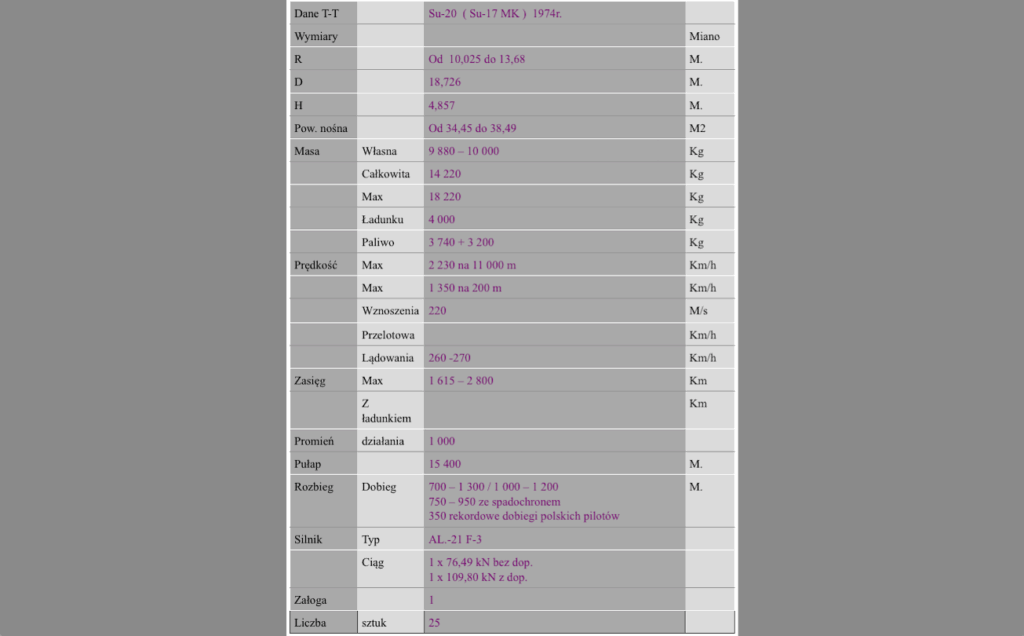
Written by Karol Placha Hetman

